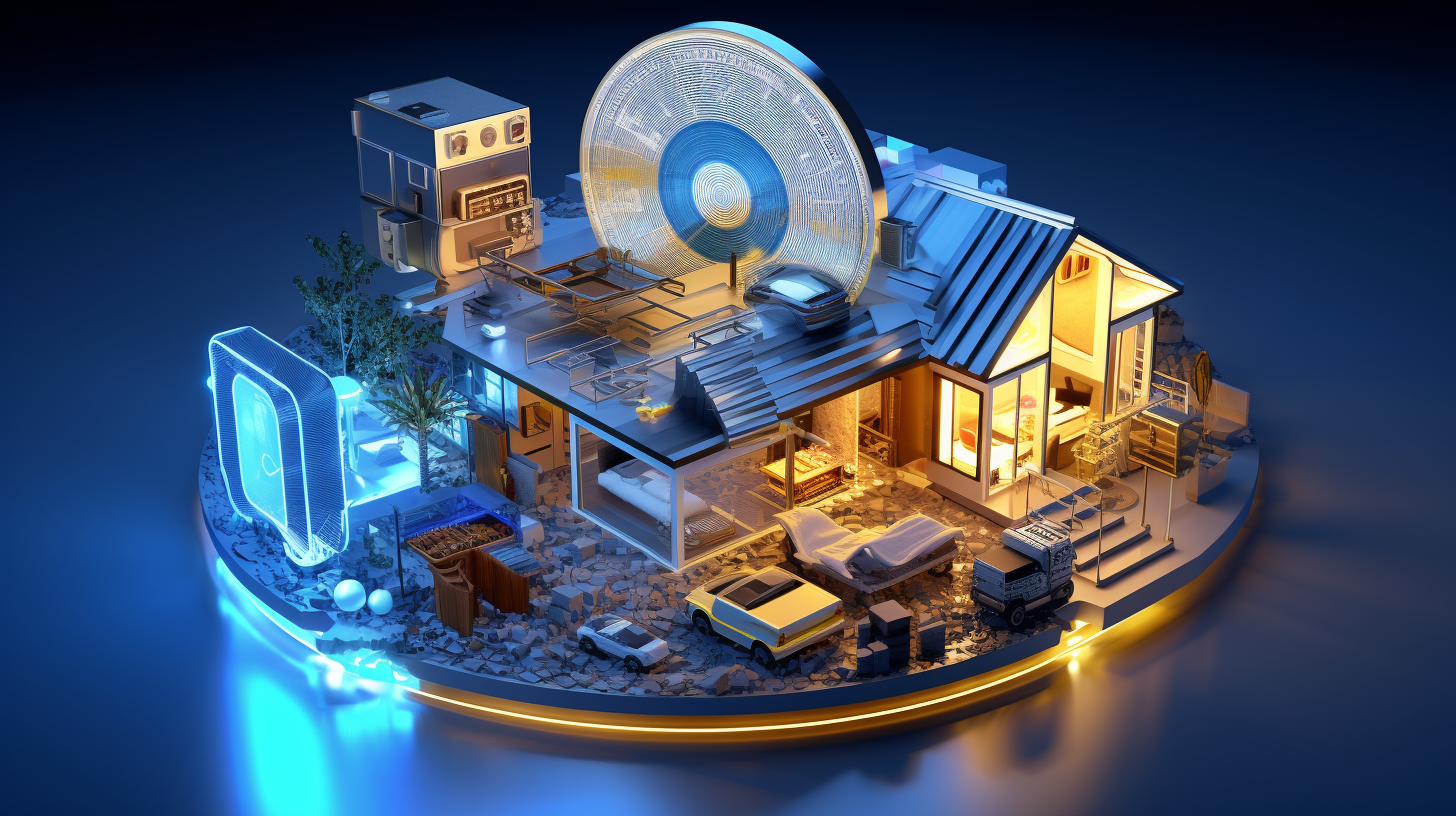Picture this: A world where your home not only shelters you but also generates income, handles its utility bills, and trades services autonomously in the bustling digital marketplace of a crypto economy. This is not a scene from a science fiction novel; it’s the burgeoning reality for self-sufficient smart homes. With innovations in blockchain technology, the internet of things (IoT), and renewable resources, these dwellings are poised to revolutionize our daily living and economic interactions.
An Economic Powerhouse Under Your Roof
The smart home of the near future does more than respond to voice commands or regulate temperature. It’s equipped with photovoltaic cells that harvest solar energy, batteries that store surplus power, and the capability to convert this energy into cryptocurrency by selling it back to the grid. Residents find themselves playing a dual role — consumers and micro-power plant operators. This shift is enabled by a synergistic infrastructure that marries renewable technology with the autonomous financial operations of cryptocurrencies.
The Nexus of Technology and Economics
What makes these homes truly remarkable is their integration with the Internet of Energy (IoE). This advanced grid system allows homes to seamlessly buy, sell or trade energy using digital currencies, facilitating a market where surplus can be monetized rather than wasted. Smart contracts automate these transactions, ensuring they are secure, immediate, and free from intermediaries.
Essentially, each smart home becomes a standalone economic entity, a node in a decentralised network. These homes optimize energy consumption in real time, adjusting to the occupants’ habits, weather conditions, and market prices. With AI-driven analytics and machine learning capabilities, they can predict energy demands and adjust production or storage accordingly.
The Blockchain Backbone
At the core of these transactions is blockchain technology, providing a tamper-proof ledger for all dealings. With cryptocurrencies, transactions are swift, borderless, and, importantly, leave a minimal eco-footprint. This is a critical consideration, given the environmental consciousness that permeates crypto society.
Blockchain also addresses security concerns, an essential consideration given the degree of autonomy these homes possess. By using cryptographic seals, it ensures that the transactional data and the control of home systems remain unassailable from cyber threats.
Challenges to Overcome
Despite the optimism, there are significant challenges, including regulatory hurdles, the volatility of cryptocurrency markets, and the initial investment required for such smart home systems. While innovations in technology typically outpace regulations, there’s a growing need for legal frameworks to support this new economic model.
Additionally, the inherent volatility of digital currencies poses a risk to the economic stability of these smart homes. This volatility can be managed through hedging strategies and diversifying income streams, such as offering data processing or storage services to the network.
The Path Ahead
Embracing the future, several forward-thinking communities have begun establishing ‘crypto-cities’, complete with self-sufficient homes as their backbone. These pilot projects serve as living laboratories, testing the symbiosis of technology, economics, and sustainable living.
As the technology matures and becomes more accessible, we can expect self-sufficient smart homes to become less of a novelty and more of a norm. With each home acting as an economic micro-unit within a broader ecosystem, the implications for the energy market and everyday financial transactions are profound. We are on the brink of a new era where living in your investment takes on a whole new meaning.
If the trajectory of innovation continues to ascend, and the pace of consumer adoption follows, the concept of your home as a self-sustaining economic hub is not just a pipe dream, but a blueprint for the society of tomorrow.
